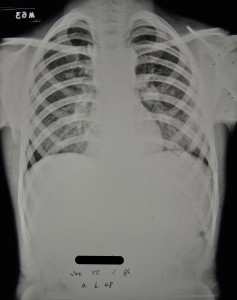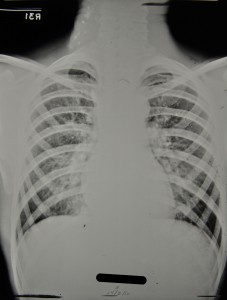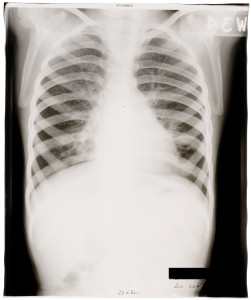The records of Stannington Sanatorium came to Northumberland Archives in the 1980s and at this point a former patient who was in the sanatorium from 1930-1936 wrote to the then Deputy County Archivist sharing his memories of his time in Stannington:
Dear Sir
What a joy and lovely surprise to receive your letter & brochure about Stannington Sanatorium! I was overcome and close to tears, as having spent nearly 5 ½ years there as a child, & in my formative years Stannington has meant so much to me. I had a TB knee my parents took me to my Dr. who confirmed it & sent me to Newcastle Infirmary for treatment. Leg put in Paris of Plaster, did no good to my leg, so I was sent to Stannington feeling terribly homesick & cried every night to go home, however I settled down to a long sojourn & treatment.
Visiting day was once every two months! My mother, a lovely soul, used to send me books & comics every week. The Magnet, The Gem, Adventure & Hotspur etc. How I looked forward to receiving them and a five shilling postal order to buy things at the tuck shop. Those were the days of hospitals with matrons, sisters, ward sisters, a lady almoner, no unions, but very dedicated nurses and staff, people who loved what they were doing. Oh yes ward maids who loved us children, the matron was strict but understanding & a comfort too, the nurses used to cuddle us and show us a lot of affection. I loved it all!

I received good food, had a spoonful of Virol and Numol twice a day, Christmas was special, artists from the Newcastle Empire & Palace came to entertain us, nurses sang carols. I feel sure we became their children to love and care for I received many kisses from them, the nearness of them as they carried us off to the bathroom was sweet & to a child they became our mothers bless them. Yes I owe Stannington a lot for my education & way of life because remember it was the thirties & people were hungry and home, no work for men and lots of pawn shops open. But there was no violence, or muggings as they call it and we could walk the streets at without fear & folk were caring and kind, what a sad state of affairs today Sir.
I was born and bred in Wallsend served my apprenticeship as a joiner at Swan Hunters very strict too. I had a happy time as a youth, used to dance at the Oxford Galleries, drink at the Pineapple Grill & go every Saturday to the Empire to see visiting bands such as Roy Fox, Harry Roy, Lew Stone etc. and also to a 4 hour show at the Paramount Cinema complete with organ and stage show all for half a crown. Oh happy days!
I am returning in three weeks’ time I remember a lot of my little friends who died in Stannington while I have been blessed with a good working life, a family & good health. I am a true Geordie in my nature and spirit I am full of nostalgia for Stannington and Newcastle and those people who were true and dedicated to their work who gave a little boy from Wallsend on Tyne lots of love and care and put me on my feet again. I have worked out since, in my memory summers were long, people were nice and one never grew old.
Thank you
[HOSP/STAN/13/5]








